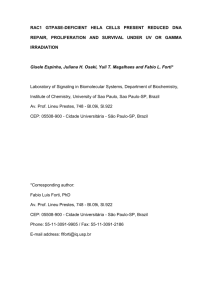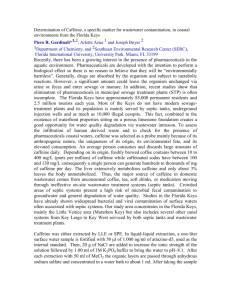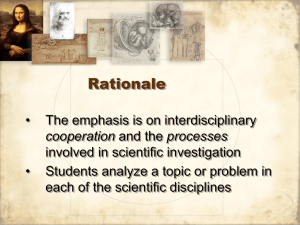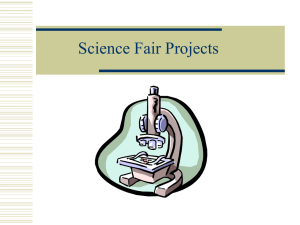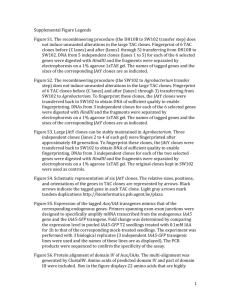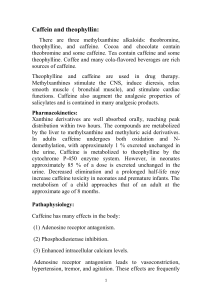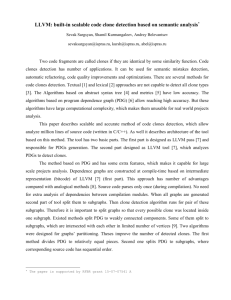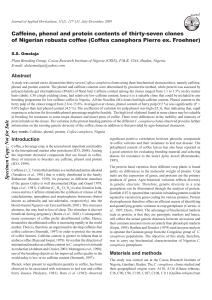Supplementary Figure and Table Legends (docx 35K)
advertisement
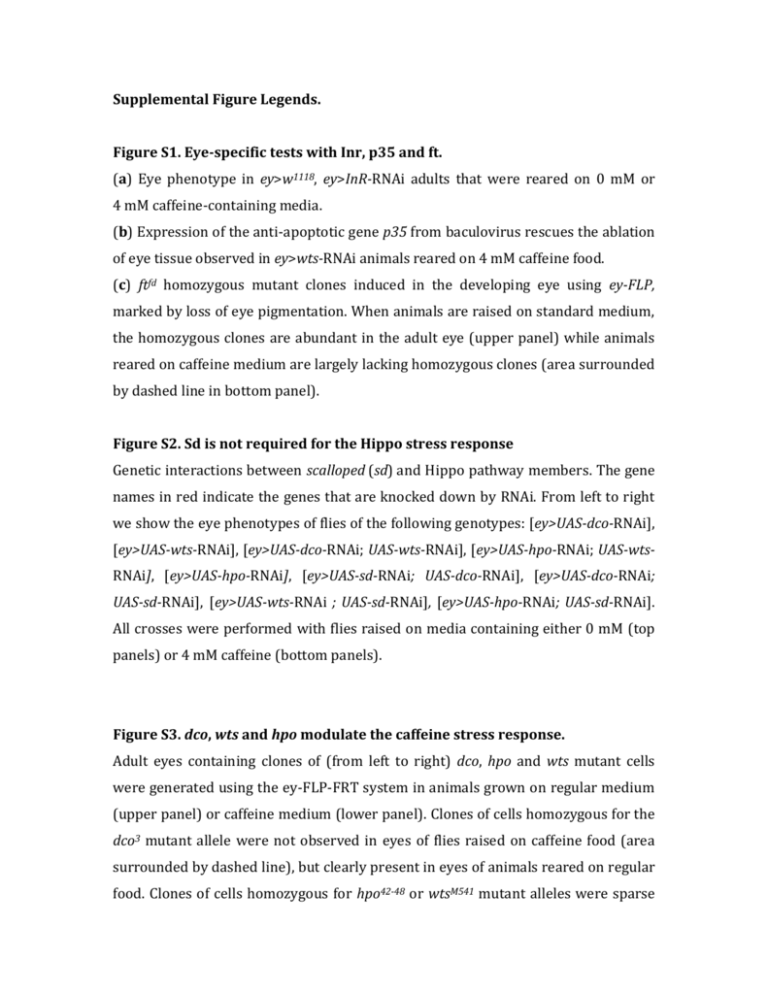
Supplemental Figure Legends. Figure S1. Eye-specific tests with Inr, p35 and ft. (a) Eye phenotype in ey>w1118, ey>InR-RNAi adults that were reared on 0 mM or 4 mM caffeine-containing media. (b) Expression of the anti-apoptotic gene p35 from baculovirus rescues the ablation of eye tissue observed in ey>wts-RNAi animals reared on 4 mM caffeine food. (c) ftfd homozygous mutant clones induced in the developing eye using ey-FLP, marked by loss of eye pigmentation. When animals are raised on standard medium, the homozygous clones are abundant in the adult eye (upper panel) while animals reared on caffeine medium are largely lacking homozygous clones (area surrounded by dashed line in bottom panel). Figure S2. Sd is not required for the Hippo stress response Genetic interactions between scalloped (sd) and Hippo pathway members. The gene names in red indicate the genes that are knocked down by RNAi. From left to right we show the eye phenotypes of flies of the following genotypes: [ey>UAS-dco-RNAi], [ey>UAS-wts-RNAi], [ey>UAS-dco-RNAi; UAS-wts-RNAi], [ey>UAS-hpo-RNAi; UAS-wtsRNAi], [ey>UAS-hpo-RNAi], [ey>UAS-sd-RNAi; UAS-dco-RNAi], [ey>UAS-dco-RNAi; UAS-sd-RNAi], [ey>UAS-wts-RNAi ; UAS-sd-RNAi], [ey>UAS-hpo-RNAi; UAS-sd-RNAi]. All crosses were performed with flies raised on media containing either 0 mM (top panels) or 4 mM caffeine (bottom panels). Figure S3. dco, wts and hpo modulate the caffeine stress response. Adult eyes containing clones of (from left to right) dco, hpo and wts mutant cells were generated using the ey-FLP-FRT system in animals grown on regular medium (upper panel) or caffeine medium (lower panel). Clones of cells homozygous for the dco3 mutant allele were not observed in eyes of flies raised on caffeine food (area surrounded by dashed line), but clearly present in eyes of animals reared on regular food. Clones of cells homozygous for hpo42-48 or wtsM541 mutant alleles were sparse or absent in the adult eye of flies grown on caffeine food, but present and larger than the wild type twin spots in adult eyes of flies of the same genotype fed on regular medium. Two eye images are shown for hpo42-48 eye clones to represent the spectrum of phenotypes we observed when animals were fed with caffeine food. Table S1. Z-score analysis of dsRNA effects on 3 and 24 hours caffeine-induced cell death. We applied z-score analysis to normalize death indices across the entire screen. The z-scores were calculated by subtracting the ATP/death index value for each dsRNA from the plate median value and dividing by the standard deviation of the plate. The z-scores assume normal distribution and represent the standard deviation of every death index from the plate median for each dsRNA treatment. Zscores above 2.58 and below -2.58 represent the 99% confidence intervals and zscores above 1.96 and below -1.96 represents the 95% confidence intervals. Each dsRNA is identified by its Computed Gene (CG) number or by its Heidelberg Drosophila Consortium identification number (HCDID).


